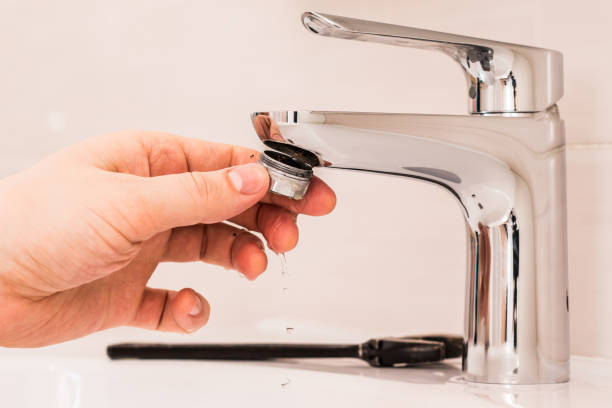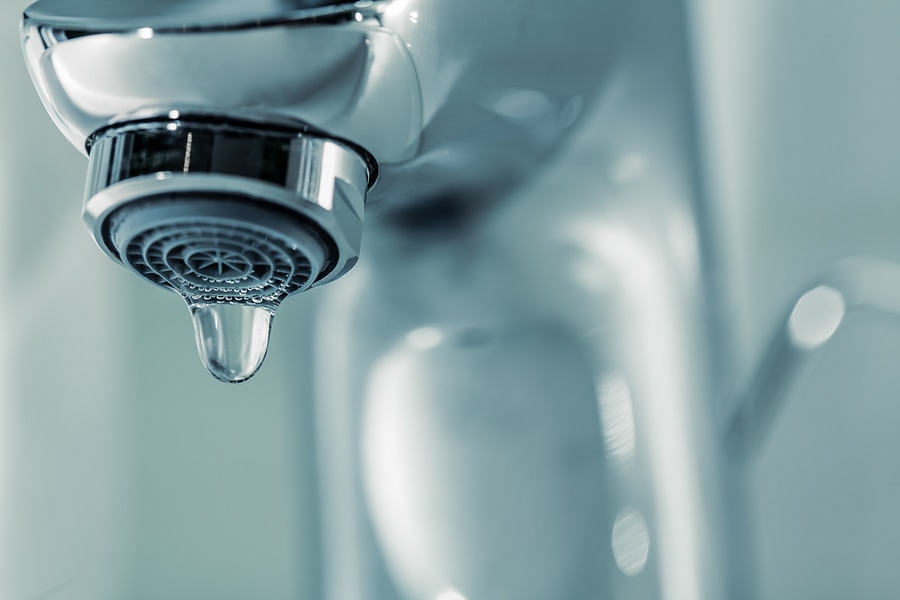Our Importance of Addressing a Broken Faucet
Our Importance of Addressing a Broken Faucet
Blog Article
The content in the next paragraphs pertaining to Should I Repair or Replace a Leaky Faucet? is amazingly remarkable. Check it out for your own benefit and figure out what you think of it.

Dripping taps may seem like a small inconvenience, but their influence goes beyond just the annoyance of the noise. From drainage to incurring unnecessary monetary prices and health dangers, overlooking a dripping faucet can bring about different repercussions. In this post, we'll look into why it's critical to resolve this usual family concern immediately and effectively.
Wastage of Water
Environmental Effect
Trickling taps add considerably to water waste. According to the Epa (EPA), a solitary faucet dripping at one drip per second can squander more than 3,000 gallons of water annually. This not just pressures water sources yet also affects ecological communities and wildlife dependent on them.
Financial Costs
Enhanced Water Expenses
Past the ecological effect, leaking faucets can pump up water expenses significantly. The collected wastefulness with time converts right into greater utility costs, which could have been avoided with timely repairs.
Potential Residential Or Commercial Property Damage
Moreover, prolonged trickling can bring about harm to components and surfaces surrounding the tap. Water buildup can trigger staining, rust, and even structural concerns if left neglected, leading to extra repair prices.
Wellness Worries
Mold and Mildew Development
The consistent existence of moisture from a trickling tap creates a perfect environment for mold and mildew and mildew development. These fungis not only endanger indoor air top quality however also pose wellness risks, specifically for people with respiratory problems or allergies.
Waterborne Conditions
Stagnant water in trickling faucets can come to be a breeding ground for bacteria and various other pathogens, boosting the risk of waterborne conditions. Pollutants such as Legionella microorganisms prosper in stationary water, potentially bring about major illnesses when consumed or breathed in.
DIY vs. Specialist Repair work
Pros and Cons of DIY Fixing
While some may try to deal with a leaking tap themselves, do it yourself repair work feature their own set of obstacles. Without proper understanding and devices, do it yourself attempts can worsen the concern or result in insufficient repairs, extending the trouble.
Advantages of Hiring an Expert Plumber
Employing a specialist plumber ensures that the underlying reason for the trickling tap is addressed efficiently. Plumbing professionals have the proficiency and devices to detect and fix faucet issues efficiently, saving time and reducing the danger of additional damages.
Step-by-Step Overview to Fixing a Dripping Faucet
Tools Needed
Prior to trying to take care of a leaking tap, collect the essential devices, consisting of an adjustable wrench, screwdrivers, replacement parts (such as washing machines or cartridges), and plumber's tape.
Common Faucet Issues and Their Solutions
Determine the kind of tap and the certain problem creating the drip. Common issues include worn-out washers, corroded shutoff seats, or defective O-rings. Refer to manufacturer instructions or online tutorials for step-by-step guidance on repairs.
Safety nets
Regular Upkeep Tips
To stop leaking faucets, carry out routine upkeep such as cleansing aerators, checking for leakages, and replacing worn-out components immediately. Furthermore, think about installing water-saving tools or upgrading to much more efficient components.
Value of Prompt Repair Works
Dealing with dripping taps as soon as they're noticed prevents more water waste and possible damages, ultimately conserving both water and money in the long run.
Influence On Home Value
Assumption of Well-Maintained Home
Maintaining a property in good condition, consisting of addressing upkeep issues like trickling faucets, boosts its viewed worth and value amongst potential customers or renters.
Impact on Resale Value
Qualities with well-maintained plumbing components, including faucets, command greater resale values in the realty market. Resolving leaking taps can contribute to a favorable impact during residential property inspections and settlements.
Ecological Responsibility
Private Payment to Conservation
Taking obligation for dealing with dripping faucets straightens with broader efforts toward water preservation and ecological sustainability. Every individual's actions jointly make a substantial impact on protecting valuable sources.
Lasting Living Practices
By prioritizing punctual repair work and embracing water-saving routines, people add to sustainable living practices that benefit both existing and future generations.
Verdict
Resolving a dripping faucet goes beyond mere benefit; it's a necessary action towards preserving water, reducing financial expenses, and protecting health and wellness and building. Whether via do it yourself repairs or specialist assistance, taking action to fix dripping faucets is a small yet impactful means to advertise liable stewardship of sources and add to a much healthier, a lot more sustainable future.
How to Fix a Dripping or Leaky Faucet
A leaking faucet is one of the most common problems that homeowners encounter, but it being commonplace doesn’t make it any less annoying. The constant drip drip drip of a leaking bathtub faucet, showerhead, or sink tap can disturb your home’s serenity. Left neglected, a dripping faucet can also result in higher water bills and discoloration or mold growth in your sink or plumbing fixtures.
Fortunately, you don’t have to be a trained plumber to know how to stop a dripping faucet. With some basic tools, replacement parts, and a little patience, leaky faucet repair is a breeze. In this article, we’ll explain what causes dripping faucets and how you can fix them.
What Causes a Leaking Faucet?
Kitchen and bathroom faucets come in all manner of designs, but most involve some combination of valves, O-rings, seals, and washers. The O-ring is usually the weakest link, but any one of these pieces can wear down over time. Heat, moisture, temperature fluctuations, minerals, mold, and movement can contribute to warping and corrosion, breaking the watertight seal. This just comes with the territory of being a homeowner. Everything is always subject to wear and tear, and some component parts of your appliances and fixtures need to be replaced on occasion. At least replacement O-rings are cheap!
More rarely, dripping faucets can be a symptom of excessively high water pressure. Were this the case in your home, you would probably notice that the leak is not isolated to one faucet. Water pressure issues are harder to resolve on your own. We recommend contacting a professional plumber if you suspect your water pressure is too high.
How to Fix a Dripping Faucet
Pipe wrench or monkey wrench Allen wrench set Screwdrivers Old towel or rag Shut off the water.
Before you do anything, you need to turn off the water to keep from drenching your kitchen or bathroom. You should find a valve under the sink and against the wall. Once you’ve turned this valve, try turning the faucet on to confirm that the water source has been cut off.
If you can’t locate your local valve for the faucet you’re working on, you can always shut off the water to the house at the main valve. Of course, this will prohibit anyone from using the sinks, showers, or toilets while you’re working on the faucet that’s giving you trouble.
Plug or block the drain.
You’ll be disassembling the faucet and removing some small bits of hardware. Plug the drain with a stopper or rag to avoid the possibility of a small screw falling into your P-trap.
Take apart the faucet assembly.
There are several varieties of kitchen and bathroom faucets, each with its own manner of assembly. For detailed instructions on how to disassemble your faucet, you can refer to the fixture’s manual or contact the manufacturer. If you know whether you have a ball, disc, cartridge, or compression faucet, you can find detailed schematics online.
In general, you need to begin by removing the faucet handles. You might notice a small screw that you’ll need to remove with a screwdriver or Allen wrench. If you don’t see any visible securing hardware, it’s likely hidden under a decorative cap that can be unscrewed or popped off with flathead screwdriver.
Remove each piece methodically, consulting a schematic when necessary. Take notes or arrange the pieces in such a way to make it easier to correctly reassemble the faucet later.
Remove the cartridge.
Once you’ve removed the handles and securing hardware, you should be able to remove the valve cartridge or stem. Some cartridges will slide right out. Other faucet models will require you to loosen a nut with a pipe wrench before you can remove the valve stem.
Examine the exposed hardware.
With the cartridge or stem removed, inspect the component parts. Check the rubber O-rings for wear and tear. Also examine the seat washer for corrosion or other damage. These pieces are usually the responsible parties for a dripping faucet, but it’s worth inspecting the other component parts while you have the faucet disassembled.
Find replacement parts.
Once you’ve identified which faucet component has failed, find an identical replacement. Your local hardware store should have O-rings, seat washers, and other standard components in stock. If you have a luxury or uncommon faucet, you may have to contact the manufacturer for a replacement part.
It’s a good idea to take your old parts with you to the hardware store so you can compare them with the store’s inventory and be sure you’re purchasing the correct replacement.
Reassemble the faucet.
With your new parts in hand, reconstruct the faucet and handles. Don’t be tempted to overtighten screws or nuts. You might think this could create a better seal, but it can instead damage or bend a delicate part of the assembly and create a new problem for you.
Turn on the water and test the faucet.
The only thing left to do is test your work. Unplug the sink, turn the water back on, and try the faucet. Congratulate yourself on a job well done!
https://www.libertyhomeguard.com/how-to-fix-a-dripping-or-leaky-faucet/

I hope you enjoyed our post about Why Are My Faucets Dripping (And Can I Fix It Myself)?. Thanks so much for finding the time to read our article post. Sharing is nice. You never know, you may be doing someone a favor. Thanks for being here. Don't hesitate to check up our site back soon.
Report this page